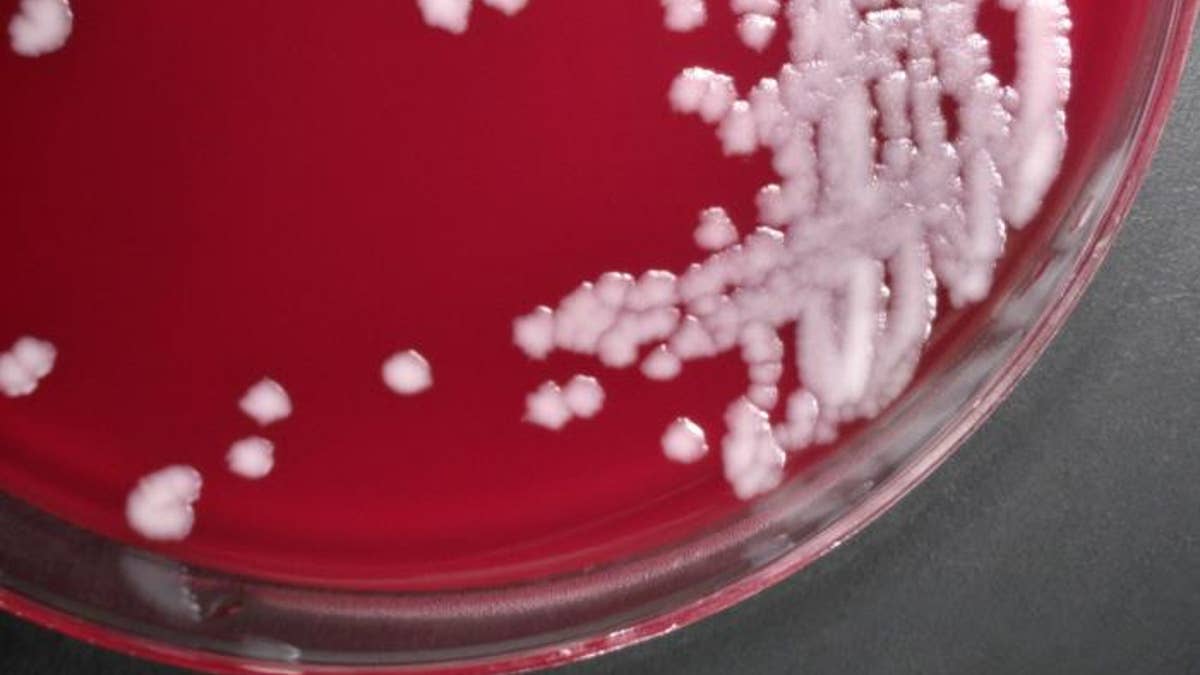
This photograph depicts the colonial growth displayed by Sterne strain members of the Gram-positive bacterium, Bacillus anthracis. Anthrax is a serious infectious disease caused by gram-positive, rod-shaped bacteria known as Bacillus anthracis. (CDC/ Dr. Todd Parker. Ph.D.; Assoc. Director for Lab. Science/DPEI(Acting) and LRN Training Coordinator)
It is a Friday the 13th Dr Paul Meechan will not soon forget.
On that night last week, bioterrorism researchers at the U.S. Centers for Disease Control and Prevention (CDC) discovered they had mistakenly sent live anthrax virus out to fellow scientists in two lower-security clearance labs at the agency, instead of what they thought were harmless samples of the deadly pathogen.
The initial safety lapse occurred in the CDC's Bioterror Rapid Response and Advanced Technology laboratory, a high security lab that was trying out a new protocol for inactivating anthrax, using chemicals instead of radiation.
In an interview, the CDC's Meechan described some of the events that led to the discovery that as many as 75 agency staff had been exposed to live anthrax. The CDC first disclosed the incident to Reuters on Thursday.
The scientists in the Bioterror Rapid Response units had been preparing an especially dangerous strain of the bacteria for use in two lower-security CDC labs, the Biotechnology Core Facility and the Special Bacteriology Reference Laboratory, Meechan said.
Those teams were experimenting with methods to more quickly identify anthrax in substances and powders sent to the United States.
"If there was a bioterrorism incident, we could more quickly identify yes or no, this sample has anthrax," said Meechan, director of the CDC's environmental health and safety compliance office.
Meechan said the team in the bioterror lab used a new process to purify anthrax samples that they had not had a lot of experience with. To check their work, they took a sample of what they thought was dead bacteria and put it on a nutrient-rich lab dish called an agar plate to see if the bacteria would grow.
"They waited 24 hours. They took a look at the plate and they didn't see any new growth," Meechan said. "At that point they assumed the material was safe."
NO ILLNESS REPORTED
Researchers took the slides to the two lower-security CDC labs which were trying to develop the new tests. Their experiments did not work and a week later, one of the labs asked for additional inactivated samples.
At the time, researchers in the bioterror lab discovered that they had left the agar plates in an incubator for an additional week, Meechan said.
As they were about to dispose of them, they noticed growth on one of the agar plates. "The growth turned out to be anthrax," he said.
That is when the scientists realized the samples they sent to the two lower-security labs may have contained live anthrax bacteria. People working in those labs take fewer safety precautions and were unlikely to be wearing a respirator, putting them at higher risk for infection.
Meechan said the team immediately pulled back the samples and contacted the staff members who had handled them.
That was on the evening of Friday, June 13th.
Meechan said they reached some of the lab workers that same night. Since then, they have been interviewing managers and using electronic surveillance and key card data to identify anyone who might have been inside one of the two labs testing the samples.
The CDC has reached out to all identified individuals, who have been offered antibiotics and a vaccine.
No instances of illness have been reported.




















